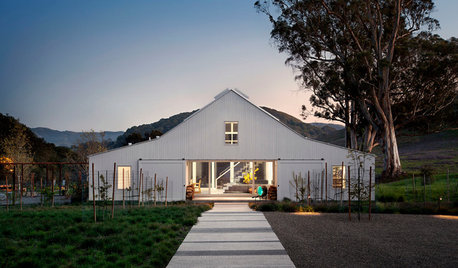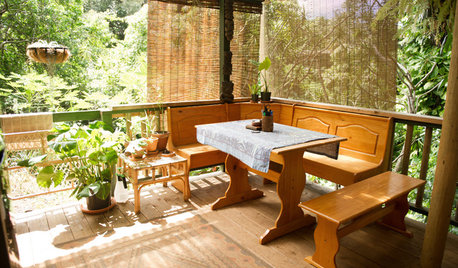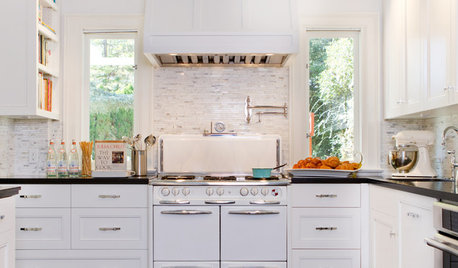Thought I'd share a bit of history (somewhat biased, but going far enough IMO) on exaggerated profits in hydroponics since it's been a subject of some posts.
It began in 1938. Dr. Gericke, at U Cal Berkeley was snubbed by his peers in the 1920's when he suggested that hydro would be a commercially successful branch of agriculture. His peers refused to give him even a token space in the University greenhouse for his experiments and scoffed at the idea as a waste of taxpayer money that hydro offered any benefit that could not be achieved in soil.
From the late 1920s to early 30s, during the heart of the great depression, the good doctor 'moonlighted' and 'weekended' his backyard with his research and developed the first modern nutrient solutions on his own time. The results were amazing and even exaggerated on top of that. He showed off 25 foot long tomato vines. It was very costly, as DIYers can imagine, and very time consuming to have a vision that his employers spurned.
After years of getting brushed off, home grown results - suddenly he had all the space in the greenhouse he needed and students studying under him. Soon, trans-oceanic flight was even more awesome then as modern day spaceflight today, and Gericke sent a student to get Pan Am up and running on tropical Pacific Wake Island where a commercially successful operation was the darling of the Jet-Age where other farming methods were impractical due to lack of soil, and fresh water was scarce. War was also brewing and the US Army soon spared no expense expanding hydroponic operations for strategic reasons in the Pacific.
40,000 written requests had come in to the University. What are the magic chemicals? Guys, my work at the University to improve systems is one thing, I'm freely sharing it with everyone, look at these systems.
As for the nutes, remember you said I was wasting taxpayers' money? Remember the criticism and professional difficulties I had fighting to get this moving, and how I was financially hurt while you didn't give me a dime of taxpayers' money? The least you can do is let me perfect my formulas (crops are different) here in the university greenhouse to be fair to me. The current formulas are still preliminary and were wholly developed at home.
Instead, senior faculty at the University again snubbed him and pirated what it could from his work as well as utilized the prior literature anew, giving the juicy fast track grant to two others who were politically privileged internally, and they developed, with generous taxpayer funding the Hoagland solution, developed in 1933 and supposed honed several time till around 1940.
History,in terms of assigning credit for ideas in academia tends to forget that the two gentlemen who both later made a career out of hydroponics began their work with the explicit agenda to discredit Gericke, supported by the administration, by designing their experiments not to optimize hydroponic yields, but rather wasting taxpayer money to debunk Gericke's claims that hydroponics could create greater yields than soil agriculture.
To be fair, it is likely that Gericke had made some statements that were conjecture, however a critical look at the attitude of the faculty can more plausibly be interpreted as backing Gericke into a corner denying him resources to completely develop the technology he championed and they discouraged, while the establishment professors utilized their power to criticize and appropriate his material at his expense for a decade. Later, the tune changed from "hydroponics is nothing worth doing commercially", to Gericke "didn't give us his recipe". Hoagland himself was connected politically and spent much time on administration; for a time he chaired the University's budget committee governing grants for use of the greenhouses among other research resources ...
Here's an early 1937 advertisement I found from an early hydro nutrient entrepreneur who got a formula based on the Hoagland and Arnon paper:
"SOILLESS AGRICULTURE: Raise tomatoes, potatoes, flowers, etc. in shallow tank of water containing 21 chemicals. Tomato vines 20 feet, bear for year, 20 pounds per vine, better than soil grown. Instructions, formula $1.00 (Los Angeles) "
$1 was only for the plans to build the system and a formula with chemicals that were not easy to find then. Then once you were hooked, you needed to purchase all those chemicals for an extraordinary markup. By 1939, since the formula had undergone some revisions, the ads began to stress, "latest formula", though who really knew what they were getting ... and things haven't changed much now on the 75th anniversary...
In 1939, this is what the press had to say about it:
"Soon concerns up and down the Pacific Coast were offering the magic chemicals for sale, often at outlandish prices, such as $2 for 4 cents worth of chemicals."
For his part, Gericke left the University in 1939 after singlehandedly founding modern hydroponics. He began his mission to bring hydroponics across the desert American southwest where it was widely speculated that farming could be on the brink of a new era (and transportation and refrigeration wasn't what it was today, so getting fresh vegetables this way was viewed as a great innovation).
This post was edited by PupillaCharites on Fri, Mar 7, 14 at 3:29

















robert_1943
robert_1943
Related Professionals
Essex Landscape Architects & Landscape Designers · New Mexico Landscape Architects & Landscape Designers · Quincy Landscape Architects & Landscape Designers · Cordele Landscape Contractors · Darien Landscape Contractors · East Chicago Landscape Contractors · Flagstaff Landscape Contractors · Melrose Park Landscape Contractors · Midland Landscape Contractors · Mount Kisco Landscape Contractors · North Richland Hills Landscape Contractors · Salem Landscape Contractors · Stony Brook Landscape Contractors · West Covina Landscape Contractors · Winchester Landscape ContractorsPupillaCharitesOriginal Author
cole_robbie
Rio_Grande
PupillaCharitesOriginal Author
cole_robbie
PupillaCharitesOriginal Author
cole_robbie
PupillaCharitesOriginal Author